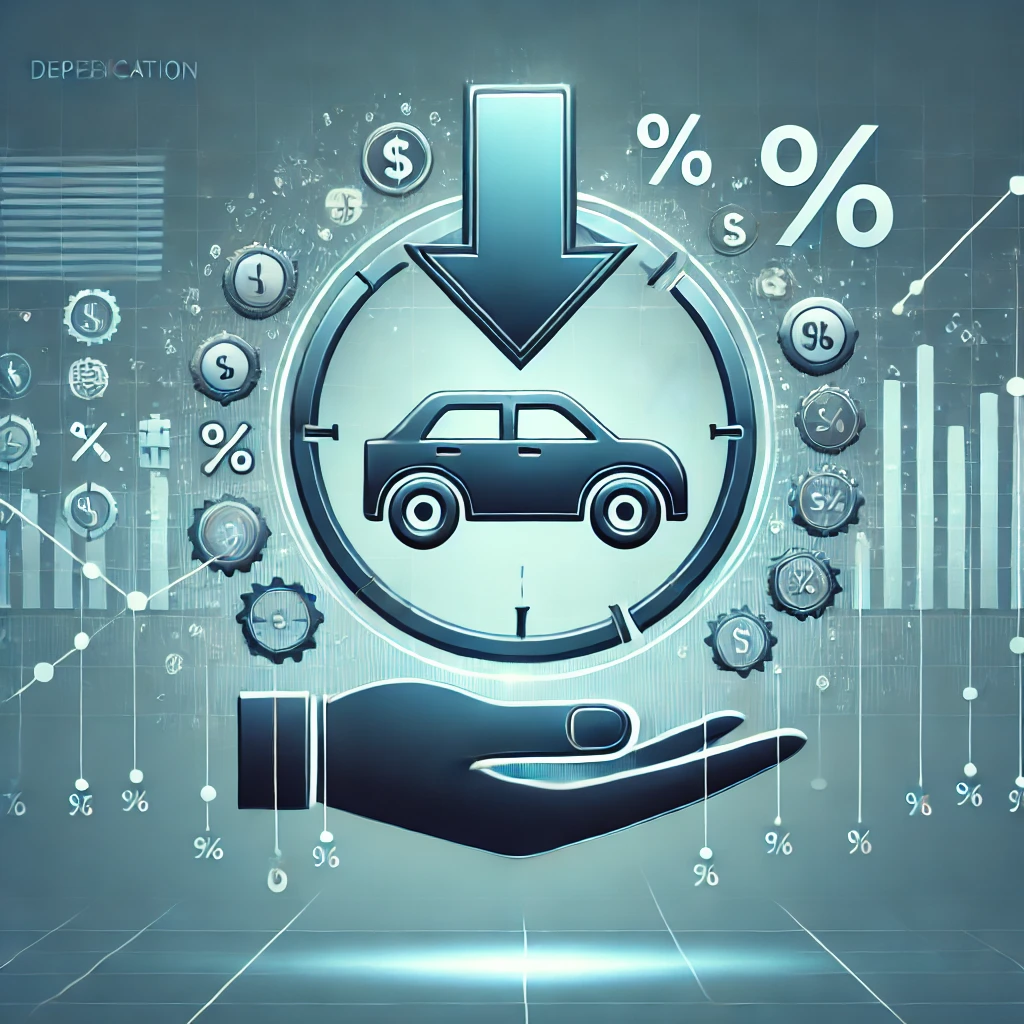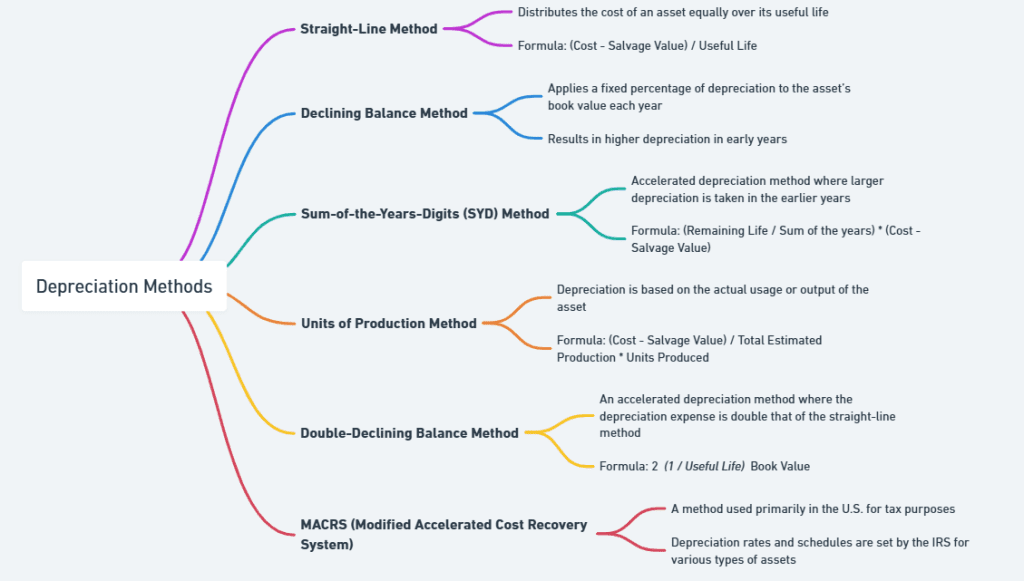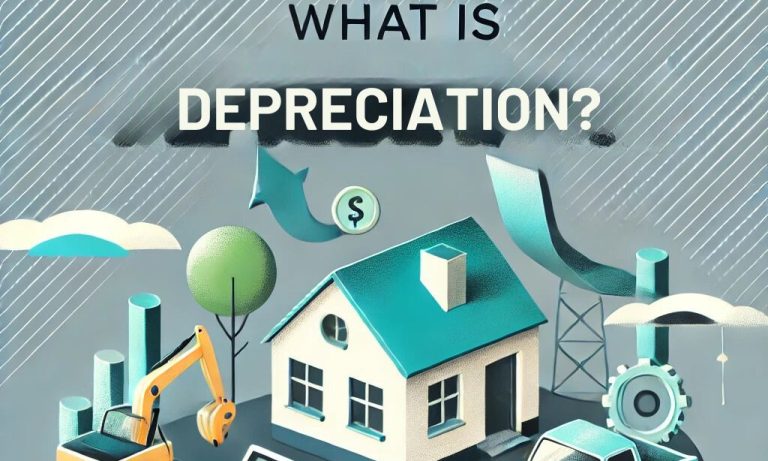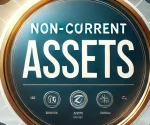Depreciation is a monetary concept whereby the cost of any tangible asset is allocated against its life. Depreciation may be termed the decrease in value of an asset because of factors such as obsolescence, wear and tear, and aging. Accounting assumes a big role in determining it since this is the expense-spreading basis for a company. Rather than charging the entire cost of an asset in one period, depreciation spreads the cost over multiple years. It is helpful for businesses to accurately record depreciation so that financial statements may reflect the actual value of their assets.
Depreciation Meaning
The cost of an asset is spread over its probable useful life through depreciation. Time takes its toll and value depreciates for physical assets like buildings, machinery, or cars because of usage and wear and tear. One cannot simply ignore this decrease in value. Depreciation gives a business the method of accounting for such losses, influencing both profit and tax obligation.
Depreciation is the determination of the periodic expense a business incurs in holding an asset. This is important because machinery, vehicles, and buildings can last for many years. It is not possible to include the entire cost of an asset in one period because it is used for more than one period. In this regard, depreciation affects the income statement and the balance sheet and is therefore very important for financial reporting.
This causes the book value of an asset to decline over time. This means that, on the income statement, there is a depreciation expense. By using such a process, a firm can lower its tax liability, which is one part of a firm’s business strategy. Perhaps, how much a company depreciates every year would be dependent on its original cost, useful life, and what method it is going to use in its accounting to record depreciation.

Depreciation Formula
The depreciation formula is used to calculate the amount of depreciation an asset will incur over a period. The basic formula for straight-line depreciation is:
Depreciation Expense = (Cost of Asset – Salvage Value) / Useful Life
- Cost of Asset: This is the initial purchase price of the asset.
- Salvage Value: This is the estimated residual value of the asset at the end of its useful life.
- Useful Life: This is the estimated period over which the asset will be used.
With this formula, one can calculate a consistent depreciation expense for each period. Among the most popular methods for calculating depreciation is the straight-line method, as it is easy to apply and gives a uniform expense amount over the asset’s life.
Example:
If a machine costs $10,000, has a salvage value of $1,000, and a useful life of 5 years, the depreciation expense each year would be:
Depreciation Expense = ($10,000 – $1,000) / 5 = $1,800 per year
This means the business will record $1,800 as a depreciation expense each year for 5 years.
Depreciation Journal Entry
A depreciation journal entry is used to record the depreciation expense in the accounting books. When an asset depreciates, the business needs to account for both the expense and the reduction in the asset’s value. Here’s how the journal entry typically works:
- Debit Depreciation Expense: This increases the expense account on the income statement, reducing taxable income.
- Credit Accumulated Depreciation: This increases the accumulated depreciation account on the balance sheet. This account reflects the total amount of depreciation that has been recorded over the asset’s life.
Example Journal Entry for Depreciation
For example, if a company records $1,800 of depreciation on a machine, the journal entry would look like this:
| Date | Account | Debit | Credit |
|---|---|---|---|
| Dec 31 | Depreciation Expense | $1,800 | |
| Dec 31 | Accumulated Depreciation | $1,800 |
This entry reduces the book value of the machine on the balance sheet while also accounting for the depreciation expense on the income statement.
Depreciation Methods
There are several methods by which businesses can calculate depreciation. The method chosen depends upon the asset and how it is expected to lose its value over time. Among these, the most frequently used methods are:
1. Straight-Line Depreciation
The straight-line method is the simplest and most commonly used. The depreciation expense is the same every year throughout the asset’s useful life.
Formula: (Cost of Asset – Salvage Value) / Useful Life
2. Declining Balance Depreciation
Under this method, the depreciation expense is higher in the earlier years of the asset’s life and decreases over time. This method is often used for assets that lose their value quickly.
Formula: Depreciation Expense = Book Value at Beginning of Year x Depreciation Rate
3. Sum-of-the-Years’-Digits Depreciation
This method allocates a larger depreciation expense in the earlier years of the asset’s life. The sum of the years’ digits formula is used to calculate the depreciation expense for each year.
Formula: Depreciation Expense = (Remaining Life / Sum of the Years’ Digits) x (Cost – Salvage Value)
4. Units-of-Production Depreciation
This method is based on the usage or output of the asset rather than the passage of time. It’s ideal for assets like machinery, where wear and tear depend on the number of units produced or hours used.
Formula: Depreciation Expense = (Cost – Salvage Value) / Total Units of Production x Units Produced in the Period
Each method has its advantages and is chosen according to the type of asset and how it is used. For instance, if an asset such as a car is expected to lose its value rapidly, the declining balance method may be the best option. On the other hand, if the asset has a steady usage rate, straight-line depreciation may be the best option.

Causes of Depreciation
Depreciation occurs due to several factors, including physical wear and tear, obsolescence, and the passage of time. Here are the primary causes of depreciation:
Wear and Tear
Worn and tear is the main source of depreciation. Anytime an asset is put to use, it automatically declines because assets can only decline with usage, especially those that have periodic usage, such as machinery and vehicles.
Obsolescence
Sometimes, assets become obsolete because of advancements in technology or changes in market demand. For example, an older computer system might become obsolete as newer and more efficient models are released. The asset loses value because it is no longer as useful as it once was.
Age
Even without heavy use, assets can lose value simply because they get older. For example, a building might depreciate over time due to aging, even if it’s not physically damaged.
Environmental Factors
Environmental factors, such as exposure to extreme weather conditions or pollution, can also cause assets to deteriorate faster. For example, a building in a coastal area may deteriorate faster due to the salt in the air.
Market Conditions
Moreover, the value of an asset can also be affected by the market. If demand for certain assets falls or if economic conditions change, the value of those assets may decline.
Why Are Assets Depreciated Over Time?
Assets depreciate over time for several reasons. First, physical assets decline in value as they age and are used. Depreciation enables a business to accurately reflect the decline in value of its assets within its financial records. Depreciation also facilitates the cost allocation of an asset over its useful life, making it easier to match expenses with revenue generated by the asset.
Depreciating assets over time ensures a firm is not overstating its profits by underreporting the expense associated with using the asset. Thus, this implies there is a need to properly report financial statements without hiding behind the cost or overstating profits. The business benefits as it reduces its tax obligations, thus saving it more money.
Depreciation is important for businesses to maintain compliance with accounting standards and tax regulations. It ensures that companies’ financial statements provide a true and fair view of their financial position. Therefore, it is essential for investors, creditors, and regulators.
Depreciation FAQs
What is depreciation?
Depreciation refers to the reduction in the value of an asset over time. It is used in accounting to allocate the cost of a tangible asset over its useful life. This helps businesses reflect the asset’s loss of value due to wear, obsolescence, or aging.
How do you calculate depreciation?
Depreciation can be calculated using different methods, but the most common one is the straight-line method. The formula is:
Depreciation Expense = (Cost of Asset – Salvage Value) / Useful Life
Why is depreciation important in accounting?
Depreciation helps businesses allocate the cost of an asset over its useful life, reducing taxable income. It ensures that financial statements accurately reflect the asset’s declining value, which is essential for proper financial reporting and tax compliance.
What are the causes of depreciation?
Depreciation is caused by various factors such as wear and tear, obsolescence, aging, environmental factors, and market conditions. These factors contribute to the asset losing its value over time.
What is the journal entry for depreciation?
The journal entry for depreciation involves debiting the depreciation expense and crediting accumulated depreciation. This entry reduces the book value of an asset and records the expense on the income statement.


